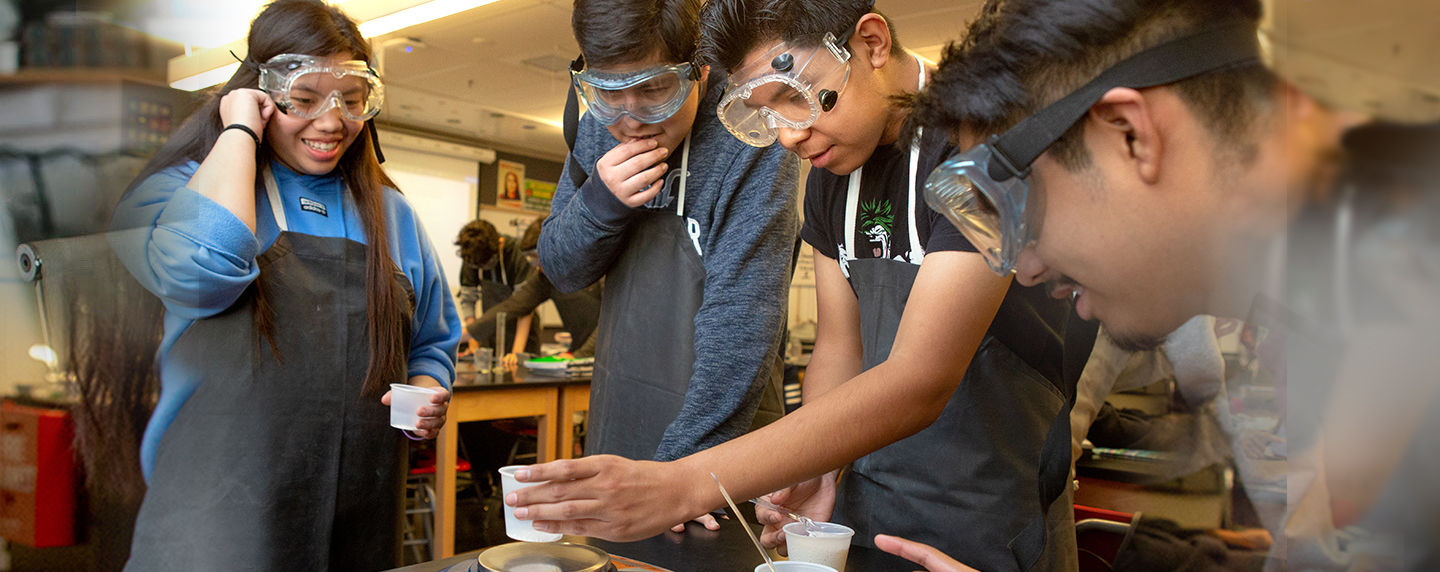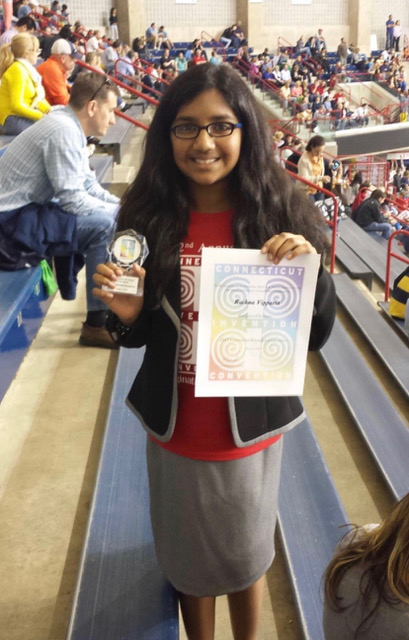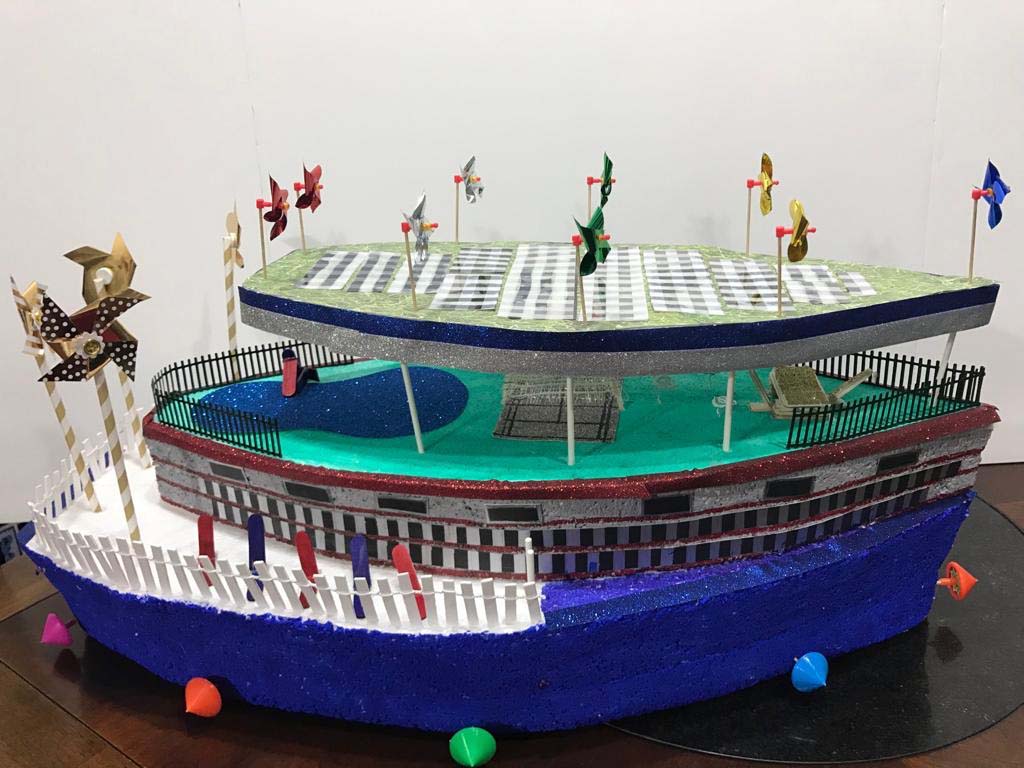
Stories of Impact
Back to In Action / Rachna Vipparla, Student
Rachna Vipparla
Senior, Jonathan Law High School, Milford, Connecticut
Rachna Vipparla graduated from Jonathan Law High School in Milford, Connecticut this spring and is headed to Washington University in St. Louis, where she will major in biology on the neuroscience track and pre-med. She aspires to be a doctor.
Rachna was introduced to the Connecticut Invention Convention (CIC) at age 11. She’s participated every year since, except for her senior year, when she collaborated with CIC to teach online classes about the invention process. Since its inception in 1983, an estimated 300,000 K-12 children have experienced CIC invention programs. Annually the CIC serves more than 17,000 students in grades K-12 across Connecticut from nearly 300 participating Connecticut schools.

Rachna Vipparla , Senior, Jonathan Law High School, Milford, Connecticut showing off her award
Invention allowed me to learn about new things and explore what I wanted to without being held back in any way.
When and how did you first learn about Invention Education? Did you seek it out or did it find you?
I first started inventing in 6th grade. I went to a magnet school called ESUMS (Engineering and Science Magnet School). In my engineering class, we had a project where we all made our own inventions. When I was presenting my invention, my teacher told me about the Connecticut Invention Convention (CIC) and thought I’d be interested in it. I researched it and really thought it would be a great opportunity for me. I really like being creative and I like science in general. So I decided to try it out. I’ve been doing it ever since.
What was your first invention?
The Pencil Pouch. It was quite literally a notebook with a duct tape pouch in the front where I could put my pencils. I kept losing them! Looking back on it now, it’s not that great. But to my 11-year-old self, I just loved it.
My first submission to the CIC was the Ouchless Band. It was a bandaid with lidocaine on it that numbed the area when you got a shot at the doctor. I was always really scared of getting my flu shot and vaccines and so I thought that if there was something to numb the area, people would be less scared.
What was it about Invention Education that first drew you to it and what made you stick with it?
I always liked being creative and just exploring in general. Invention allowed me to learn about new things and explore what I wanted to without being held back in any way. It also allowed me to be creative and work with my hands. I was always an artist of some sort when I was younger. It was really a way to integrate all of my interests in one project, being able to have that creative side of me and the STEM side of me combined.
What about the invention process engages your creative side?
The problem solving portion and thinking of the right solution for you requires some creativity, which is what I think makes CIC so special. It allows all the students to be creative and explore their minds.
I also love the prototyping part. It is my favorite. It’s basically arts and crafts, but sciency. For the Ouchless Band I made a paper mache mannequin hand and made a fake duct tape band-aid. I always tried to go all out with it because it was always so fun to me.
Do you think creativity is something a student needs to already possess as she starts her invention journey or can she develop it as she goes?
I think everyone has a little bit of creativity in them. But I think invention in general nurtures that side of you and allows it to grow, which is what I think is so special about it. It takes something in you that you don’t even know you have and showcases it through your work.
Did you face any challenges when you first began to engage with the invention process? What was the setting? How old were you?
When I first started working with CIC at age 11, my biggest problem was narrowing down a problem that I wanted to solve. At that point I had so many interests and so many things I wanted to work on, that it was difficult for me to choose one and work on only that without getting distracted by all the other possibilities.
It got a little more difficult when I would think of solutions and then learn that they were already on the market. That was pretty disappointing.
What has been the most rewarding part of Invention Education for you?
I really enjoy meeting all the other inventors. I made some really great friends through CIC who I still talk to today. Everyone there is in some way connected. We all have creative mindsets, which makes it easy to make friends.
What did the invention process teach you about yourself? How has it helped you grow as a person?
It definitely showed me how persevering I am. There were hurdles along the way for each invention, because that is always going to be the case. I learned that I just don’t give up when I put my mind to something. The CIC and inventing in general really strengthened that in me. At the end of it, I would always have a final product that I was proud of, regardless of the struggles I had to go through along the way.
As I got older, perseverance became even more important. I had more things going on, other responsibilities – school getting harder, extra curriculars. Despite whatever else I was doing, I had to make time for CIC, and still work on it even when I was busy, stressed and tired.
What else has invention taught you?
Empathy. I saw that the problems I was solving wouldn’t just help me, but would also help my community or even the world. It really started to affect how I looked at things. I began to develop empathy for people and things I never would have thought of before.
Can you share an invention where this came into play?
In 8th grade I went on a cruise with my family and I just started thinking about how bad the ship must be for the environment. I was already in the mindset of looking for problems to solve because I needed an idea for the next CIC.
After that trip, I “made” a cruise ship powered on solar panels, windmills, and tidal turbines. I did all the math for it. I said: This is how much fuel an average cruise ship uses. This is how bad the emissions are for the ocean and the environment. This is how much weight a cruise ship can support. So, how many windmills, solar panels and tidal turbines can we have and how much energy can each of them produce that would actually end up allowing the cruise ship to run without any problems? I had to do all that math. That was my most math based invention.
Until I did all the research, and built my invention, I didn’t really understand what just one single cruise could put all the animals in the ocean through. In developing that invention, I was able to gain empathy for the natural world.
I had a lot of fun with that too because I got to build a big cruise ship out of styrofoam.

What do you think is the greatest misperception about inventors and the invention process?
That people believe that only certain people can be an inventor. Or they think that they can’t do it. Because going into it, it seems difficult. It seems impossible. But every single person can be an inventor and everyone has that invention side in them.
What would you say to young people who hold this misperception?
You never know unless you give it a shot. Just try. Start with the process. Start brainstorming and thinking about problems you are genuinely passionate about. Because once you start and once you find something that you care about, I think that everyone has it in them to continue, to think of a solution and create an invention. The biggest problem is just getting started.
What role have adults played in your invention career to date?
They have all been so, so supportive.
Having someone explain the process to me in 6th grade – my engineering teacher – made things a lot easier for me when I was getting started.
The support from the staff of CIC has been great. They really do care about the inventors and do their best for us.
Also the teacher/advisor of the Milford High School Inventors Club, my history teacher, was great.
Well that is interesting. I think some people might be surprised to learn that a history teacher was advising an invention club. Can you explain how that came to pass?
Honestly, I really liked her as a teacher. I reached out to her about it. I explained what CIC was. In general, she’s really passionate about learning and helping her students in any way she can. And that’s exactly what she did. She was there to support us. To hear our pitches and ideas. . As the Club’s founder and given my experience with CIC, I would usually teach new members about the competition and how to approach it. She would be there backing me up and just explaining the process of learning and applying it to invention.
I know you’ve mentioned perseverance, creativity and empathy. What are some of the other characteristics and skills that a student builds within an Invention Education setting?
One thing it definitely improves across the board is communication skills. Because regardless of what your invention is or how amazing it is, the most important part is being able to communicate your ideas and solutions to the people you are explaining it to. That had a huge impact on me. When I was in 6th grade I was definitely very shy and I wasn’t able to express my ideas. But as I kept working with CIC and practicing and talking to people it definitely improved significantly and I think I noticed that in a lot of other students as well.
It also builds confidence. Because when you go to present your project, you talk about something that only you really know about and I think that just makes it special. The sense of ownership is strong. That has definitely made me and the other inventors I work with more confident.
What about the STEM subjects specifically? Does it build knowledge and interest in those areas?
One of the great things about invention is that it’s so individualized. So for some students, it might increase their knowledge of computer science. For others it might nurture their interest in the arts.
I definitely think it shows students through experience that there are so many other ways to approach the STEM fields than what is typically taught in school. With invention, you’re integrating knowledge in those fields into something you’re actually passionate about.
This past school year forced all of us to learn and study in new and unexpected ways. Has virtual and hybrid learning influenced your perspective on Invention Education in any way? Are there lessons learned that will change the way you invent going forward?
I went virtual for most of the year. I learned that if you’re passionate enough about something, it doesn’t matter if you’re virtual. A lot of kids would still be perseverant about their inventions regardless of how difficult it was being online or even though they couldn’t meet in person.
How has invention informed your career path?
I think I would have done pre-med regardless, because that was already a dream of mine. That said, a lot of my inventions were related to the medical field. Seeing the impact that one person can have on the field really reinforced that this is something I want to do.
How has participating in CIC changed your sense of connection to the community and the connection between inventors and community challenges?
With a lot of my projects I would be reaching out to members of the community who would be able to help me. First of all, people are so helpful. Just talking to them and getting their perspective was always beneficial. I was also able to build connections with so many people I still keep in touch with today.
One of my inventions, Alz-Aid, led to a relationship with a community nursing home and so much more. I had taken a class about Alzheimer’s and brain health in general. I became very interested in finding a way I could help this population. I learned that music therapy is very beneficial for Alzheimer’s patients. It reduces restlessness at night. I ended up building a bed that has a music device in it that would play classical music for them. I reached out to local nursing homes and talked to nurses. They thought it was a great idea. I got to test it out on some of the patients. Through this experience, I got an internship in a lab at Yale, started volunteering at one of the nursing homes, and regularly participating in Alzheimer’s walks. It led me to so many opportunities I didn’t even know were there.
